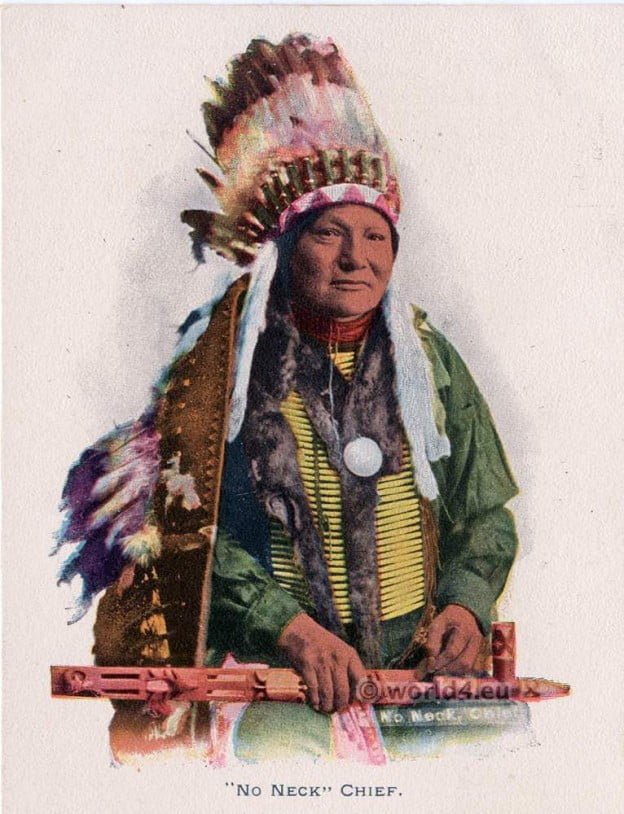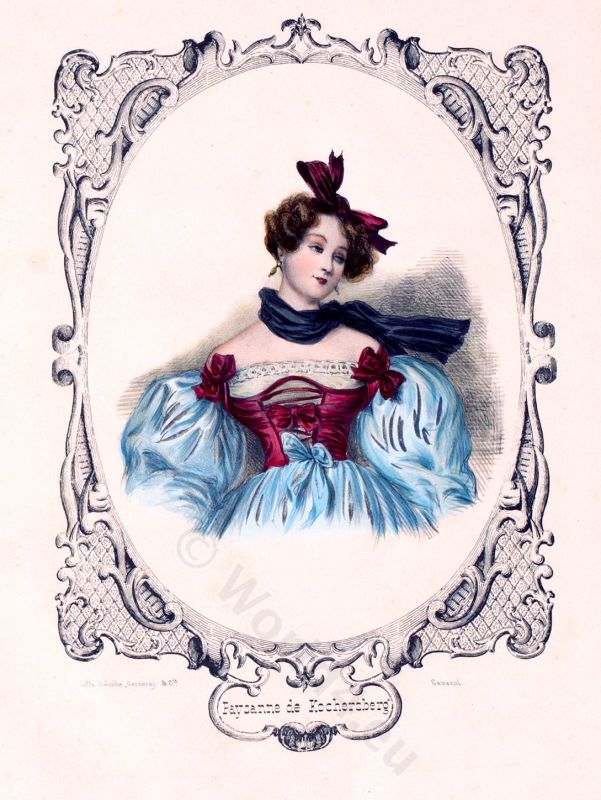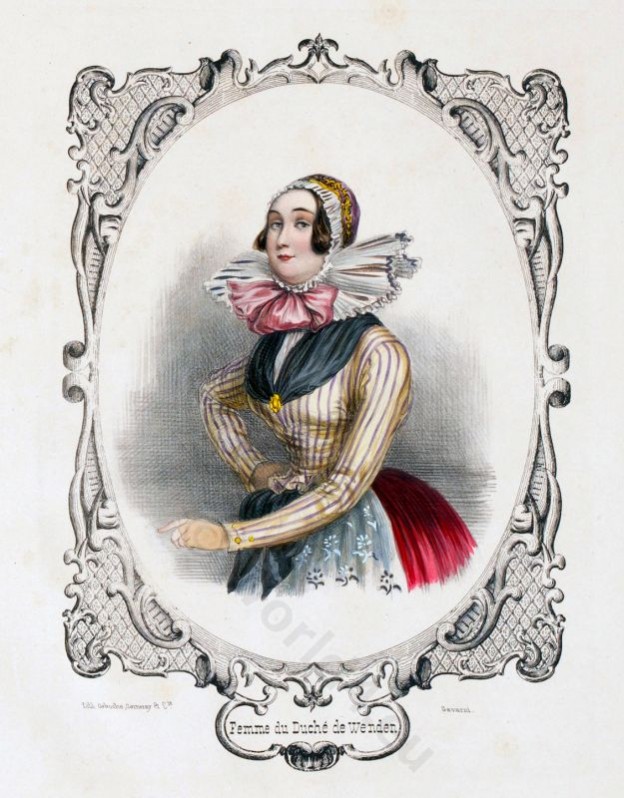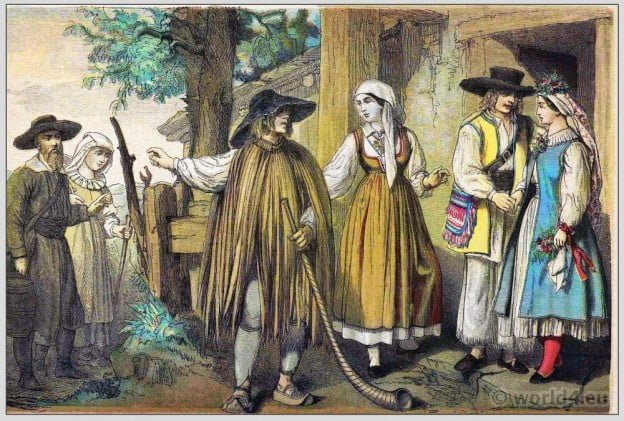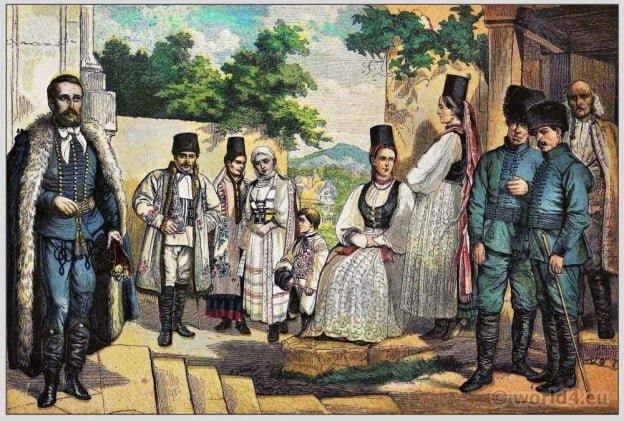The Hunkpapa or Húŋkpapȟa (formerly often rendered as Honkpapa) are a North American Indian tribe and belong to the Lakota of the Sioux language family.
Category: 19th Century
Alsace empire costume from Kochersberg in 1840.
Romantic costume of a woman from Kochersberg, Alsace
German peasant of Duchy of Saxe-Altenburg.
German peasant of Duchy of Saxe-Altenburg, 1840.
Woman in the costume of the Duchy of Wenden.
Woman in the costume of the Duchy of Wenden.
Traditional Bavarian folk costumes from Starnberg, Munich.
Traditional Bavarian folk costumes from Starnberg, Munich. Costumes from around Starnberg from the years 1850s. Starnberg is a lake of the same name and place south of Munich in the… Read More
Traditional Bavarian dresses from Starnberg in 1850.
Traditional Bavarian dresses from Starnberg. Male costumes from around Starnberg from the years around 1850. Starnberg is a lake of the same name and place south of Munich in the… Read More
Traditional Bavarian Costumes from Wolfratshausen, 1860.
Traditional Bavarian Costumes from Wolfratshausen, 1860, 19tes century. Old Bavarian festive dresses. Man and woman in original “Trachten” (Bavarian dialect for folk costumes) of Wolfratshausen near Munich, Bavaria, Germany. The man… Read More
Bridesmaids clothing in 1860. Traditional Bavarian costumes.
Bridesmaids clothing in 1860. Traditional Bavarian costumes. Two women in traditional costume (Dirndl) of Starnberg, Bavaria, Germany. Starnberg gained notoriety through the death of the Bavarian King Ludwig II, also… Read More
Moldawia folk dresses. Austro-Hungarian monarchy costumes
Moldawia folk dresses. Traditional national costumes. The peoples of the Austro-Hungarian monarchy. Published by Johann Nepomuk Vernay, Austria, 1896.
Bucovina folk dresses. Traditional folk costumes from Ukrajna.
Bucovina folk dresses. Traditional folk costumes and military uniforms from Ukrajna. The peoples of the Austro-Hungarian monarchy. Published by Johann Nepomuk Vernay, Austria, 1896. Traditional ethnic costumes from Galicia

